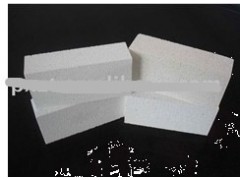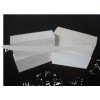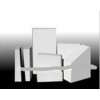fire clay brick
1Excellent heat insulation
2Nice chemical stability
3Low content of impurities
4Long service life
fire clay brick
De
Foam refractory brick with super-low thermal conductivity add foaming agent and stabilizing agent into the slurry confected by some refractory raw materials, such as alumina powder, refractory clay and cyanite. After mixing them, the refractory slurry evenly adsorbs around the foams, and spherical proes are formed after being dried and fired. The six faces are all cut by machine so that the sizes are accurate.
Foam refractory bricks with super-low thermal conductivity manufactured by our company have four brands. Bulk densities differ according to the amount of foaming agents to meet the liningsdemands of different thermal equipment.
fire brick Features:
·Excellent heat insulation
·Nice chemical stability
·Low content of impurities
·Accurate size
·Long service life
·All types of products available as customers require.
fire brick Application:
Mainly anti-carburizing furnaces in heat treatment industry and also heat-insulating layers of the linings of tubular furnaces in petrochemical industry, ethylene pyrolysis furnaces, first-stage reforming furnaces of synthetic ammonia and other high-temp industrial kilns and furnaces.
Main Properties
|
Properties Brand |
Bulk Density g/cm3 |
Compressive Strength ≥Mpa |
Compressive Strength ≥Mpa |
Reheat Linear Change % |
Thermal Conductivity 350°Cw/m·k |
Al2 O3 % |
Fe2 Ozzz ≤% |
|
|
°C×12h |
% |
|||||||
|
PM–0.5 |
0.5 |
1.2 |
0.8 |
1230 |
–0.5 |
0.16 |
45 |
0.8 |
|
PM–0.6 |
0.6 |
1.5 |
0.9 |
1260 |
–0.5 |
0.19 |
50 |
0.8 |
|
PM–0.8 |
0.8 |
2.2 |
1.2 |
1300 |
–0.5 |
0.24 |
50 |
0.8 |
|
PM–1.0 |
1.0 |
3.0 |
1.5 |
1350 |
–0.5 |
0.30 |
50 |
0.8 |








